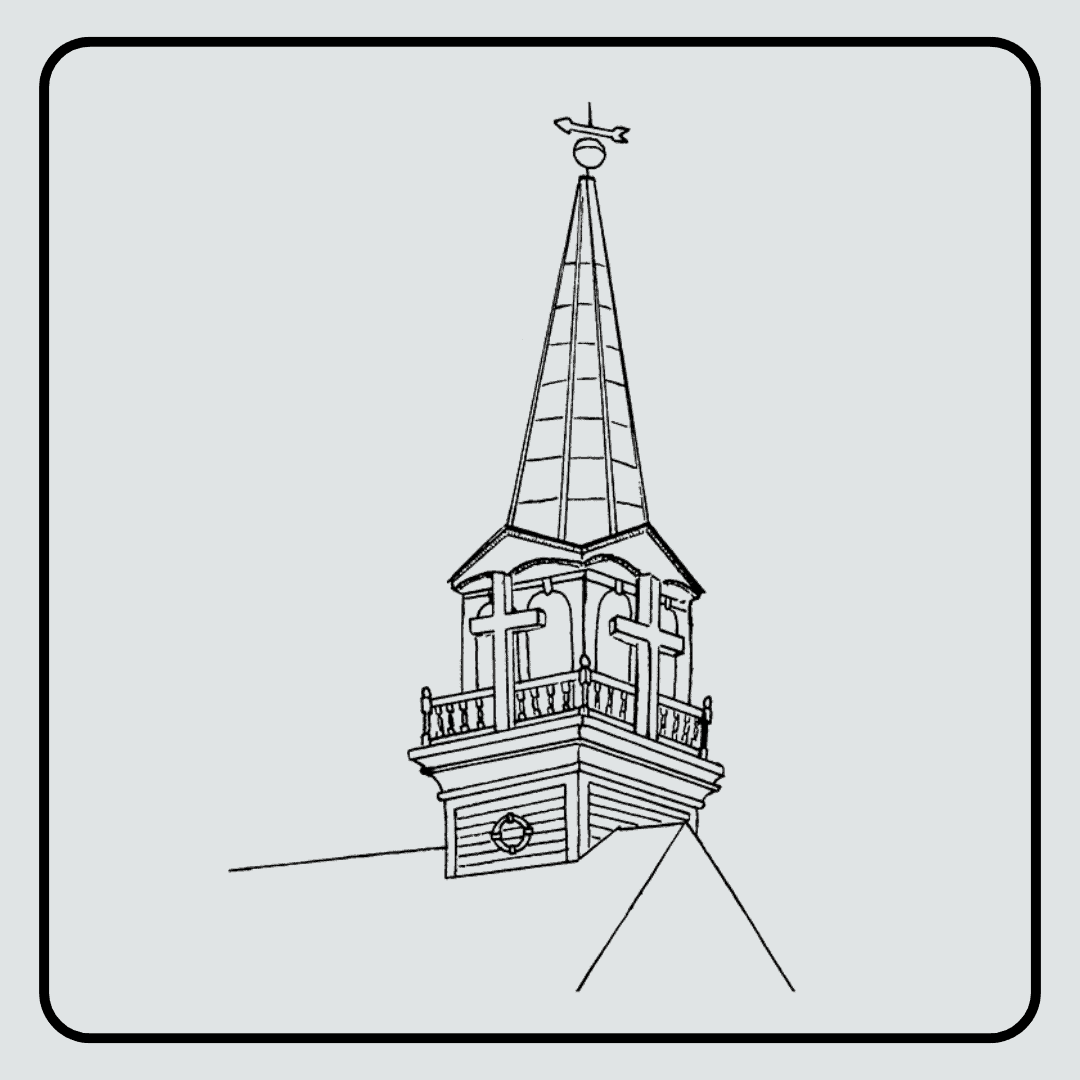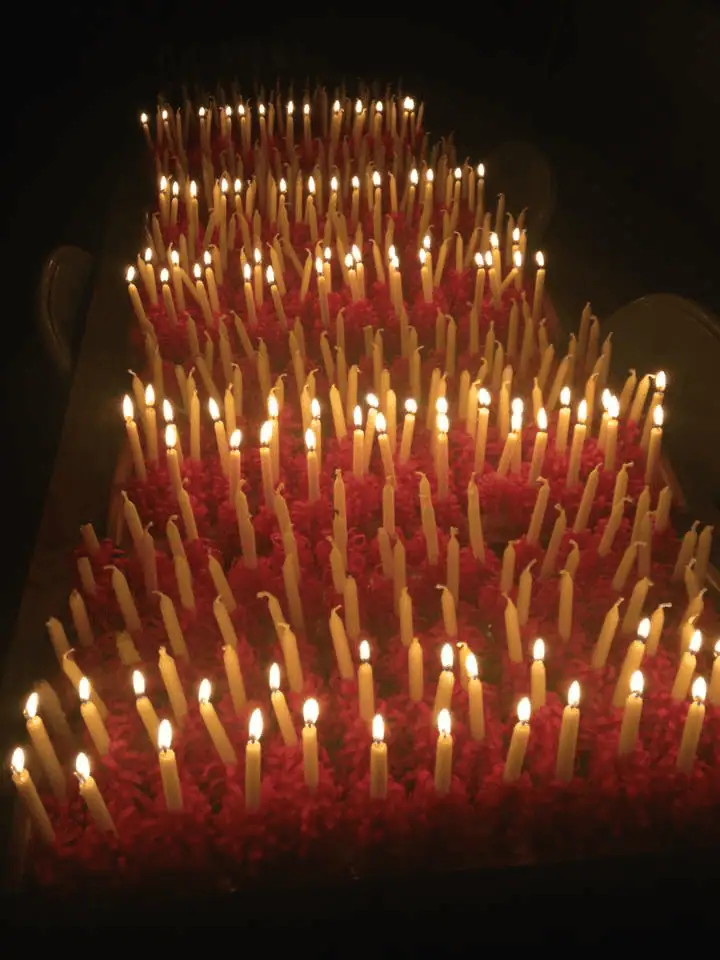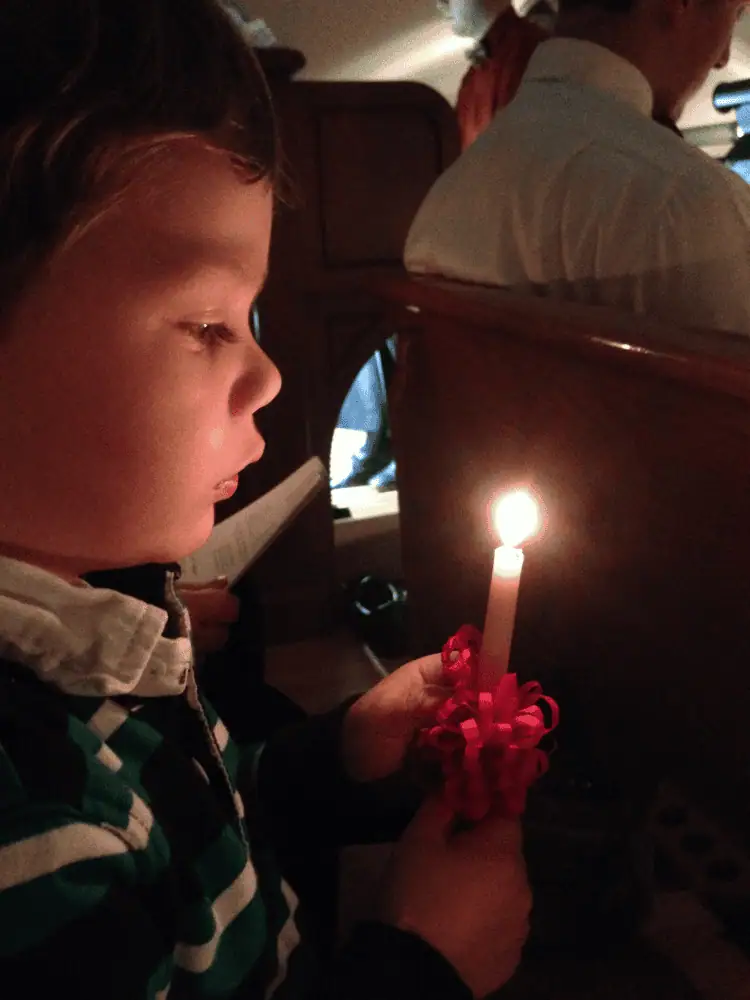The Moravian Star
The first Christmas decoration to go up in Moravian homes and churches is the Moravian Star. The Moravian Star is sometimes called the Advent Star, Bethlehem Star, or Herrnhuter Star.
Originating in the Moravian boarding schools in Germany in the nineteenth century as an exercise in geometry, the stars were carried throughout the world by missionaries and other church workers. While we are most familiar with the white star, the first star had alternating red and white points. Stars colors have also included red and yellow, white and yellow, and a yellow “starburst” with a red center. (Pictured: Schoeneck’s Moravian Star — made by the Rev. Roy Ledbetter and given to the church.)
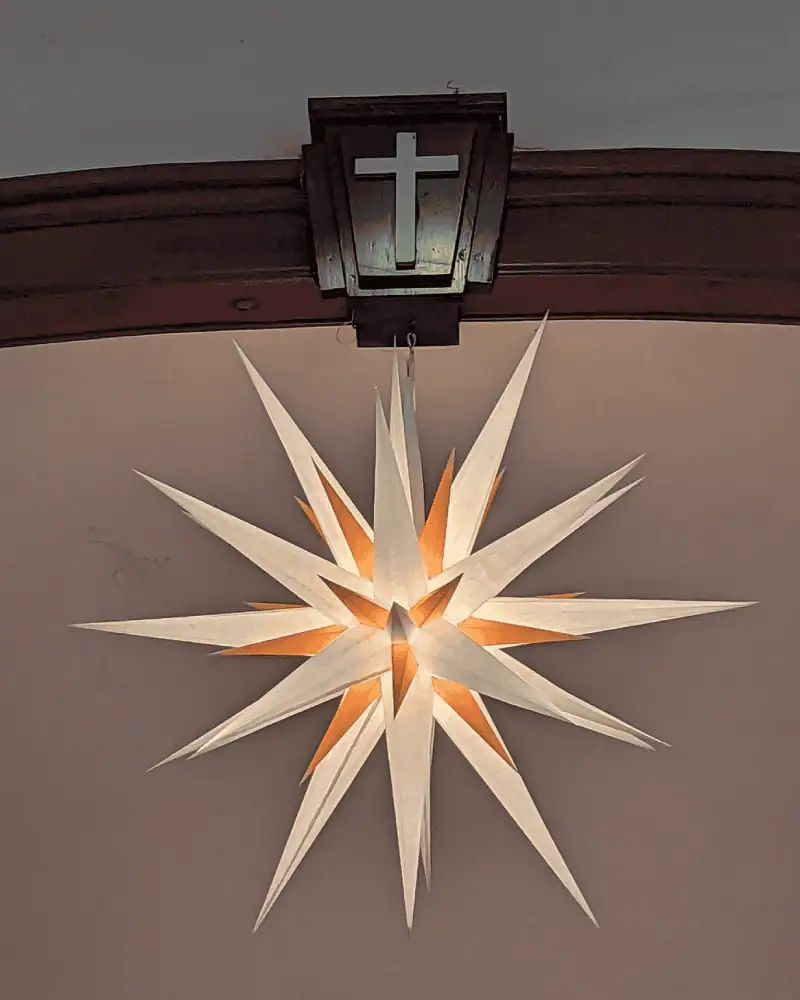
These stars are now also a common sight in Christmas markets across the world, and many folks not connected with the Moravian Church also hang Moravian Stars in their homes as an integral part of their Christmas decorations. From the Himalayas to the Caribbean, the Moravian Star proclaims the hope of Advent.
History of the Moravian Star
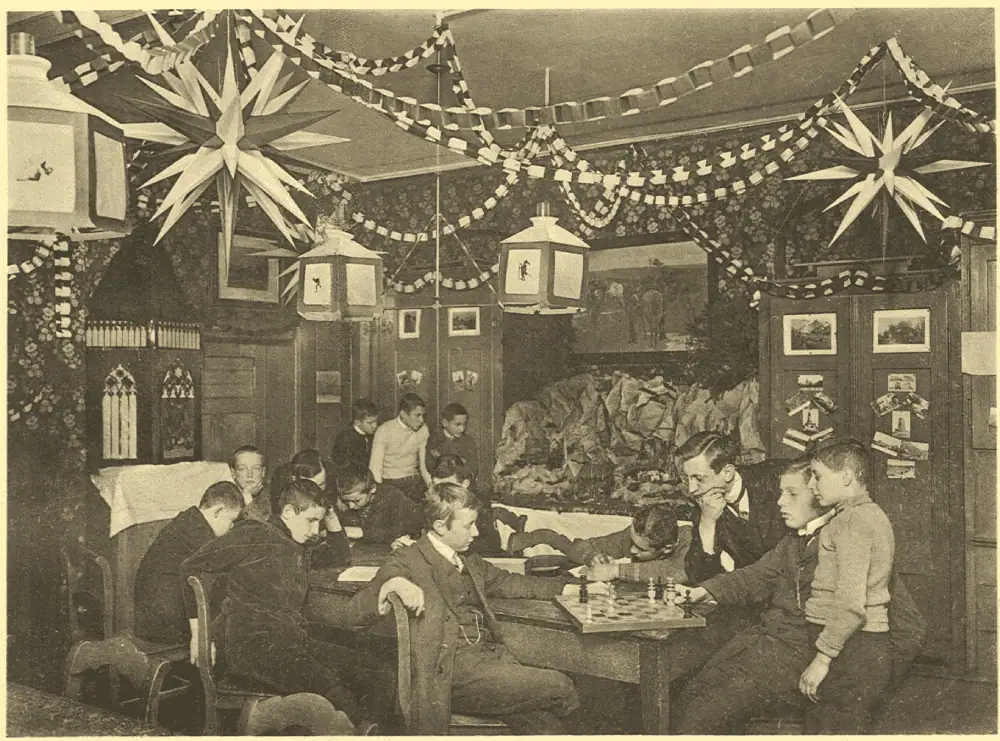
The earliest record of the star is of one created by Brother Christian Madsen in December 1820. He resided at the Moravian Boys’ School in Niesky, Germany, where he constructed the star as a personal Christmas decoration.
The next month the multicolored, 110-point star was displayed for the 50th anniversary of the school.
A teacher at the school then used the star in mathematics class to help students understand geometry better.
He let the children at the boarding school construct stars of various geometrical shapes from paper and cardboard, and these stars later adorned the schoolrooms. The children would make their stars in school and then take them home to their families. As the schoolboys continued to make them each year, in a simplified version containing 26 points, the stars became quite popular. The first stars were white and red, white for purity and red for the blood of Jesus Christ.
Commercial Stars
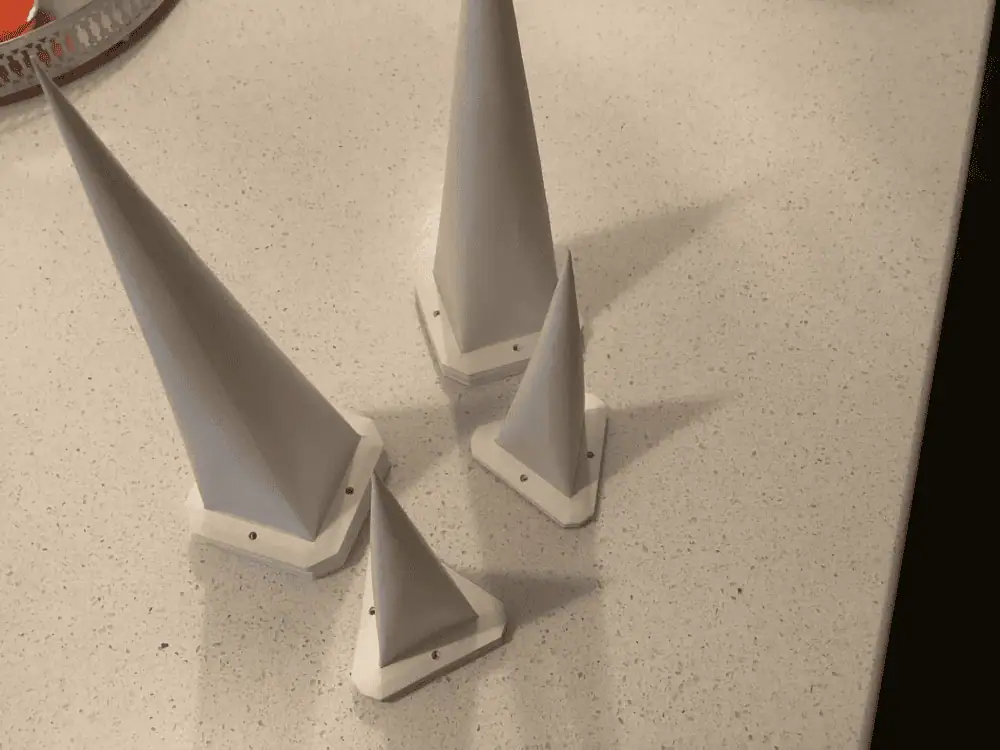
In 1897, businessman Pieter Hendrik Verbeek, who had attended the school in Niesky, invented the first stable, collapsible star. Verbeek’s star had paper points that were attached to a metal frame. This innovation meant that the star could be sent folded up for the first time and was initially sold through the Herrnhut mission bookshop.
In the following years, Verbeek developed the design further, founded the “Stern-Gesellschaft mbH Herrnhut” and applied for a patent for the first disembodied star in 1925. This model corresponds to the design commonly used today — with 17 square and 8 triangular points.
The way the stars were made, of individual cones with square and triangular bases, meant that they were easy to pack and post. This meant that the tradition of the Moravian Advent Stars could spread to Moravian Churches across the world.
Herrnhuter Stern, as the company is called today, still makes some of the best-known Moravian stars in a multitude of colors and sizes. In their modern production rooms, busy hands still fold and glue paper in the traditional way to create the small and large points for the famous Herrnhuter Stars. The website of the Moravian Star Factory in Herrnhut can be visited using this link Herrnhuter Sterne
While we are most familiar with the white star, the first star had alternating red and white points. Star colors have also included red and yellow, white and yellow, and a yellow “starburst” with a red center.
Moravian Stars can now be found in many colors, a variety of numbers of points, and made from many materials, electrified or not.

Meaning of the Moravian Star
Moravian Stars are featured in many Moravian church sanctuaries, and during Advent and Christmas, can be seen on front porches and Christmas trees in Moravian communities. While many people use Moravian Stars simply as a beloved decoration, the star’s significance lies in its meaning:
- The star reminds us of God, who caused the light to shine out of darkness, and of the light which is the life of humanity.
- It reminds us of the promise of Abraham that his descendants would be more numerous than the stars.
- We are reminded of the star that that led the wise men to Bethlehem in search of the newborn King of the Jews.
- It reminds us “The Light shines in the darkness, and the darkness has not overcome it.” (John 1:5)
- The Advent star also points to Jesus, who said, “I am the bright and Morning Star.” (Revelation 22:16)
This is the message of the Advent Star — it is the star of promise, the star of fulfillment, and the star of hope.
When To Hang A Moravian Star
Traditionally a Moravian Star is hung on the first Sunday of Advent. It is the primary centerpiece of the Moravian Christmas Eve worship service where, along with lighted candles, it stirs worshipers to feel the presence of Christ, the Light of the World.
The singing of the beloved hymn “Morning Star, O Cheering Sight” by Moravian composer F. F. Hagen adds to the joy of worshiping in the light of Christ Jesus.
It is most frequently taken down on January 6, Epiphany, the date when we traditionally celebrate the Wise Men arriving in Bethlehem. In some Moravian churches, the Advent Star is left up until February 2 to mark Candlemas, when the infant Jesus was presented in the Temple which was witnessed by Simeon and Anna, who proclaimed him to be the Messiah. (Luke 2:25-38) Some people even leave it up until the day before Ash Wednesday, known as Fastnacht Day, Shrove Tuesday, or Mardi Gras, so that it is lit for the entire Epiphany liturgical season. And some people enjoy keeping them up all year long!
Some Examples of Moravian Stars

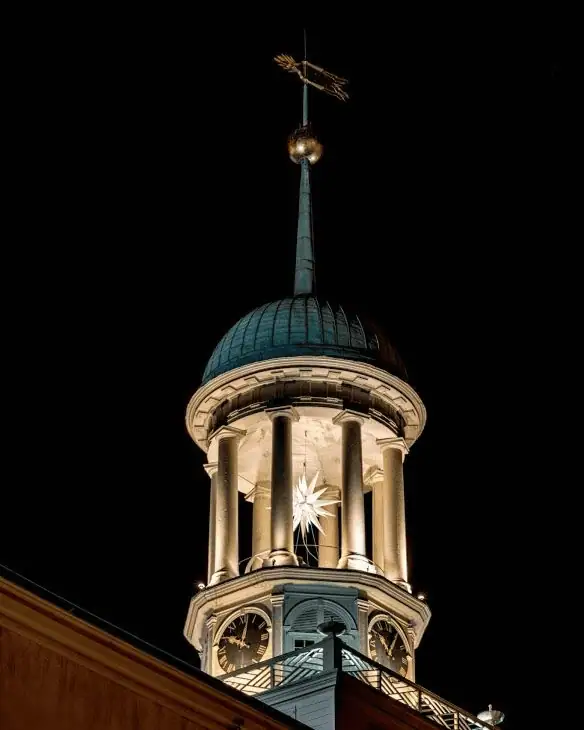




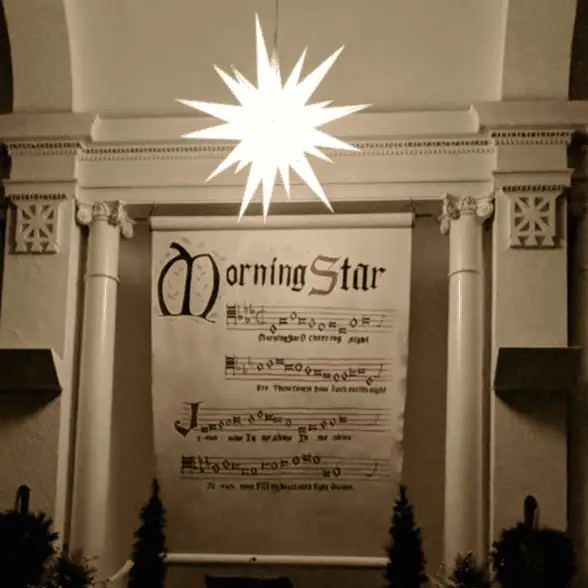
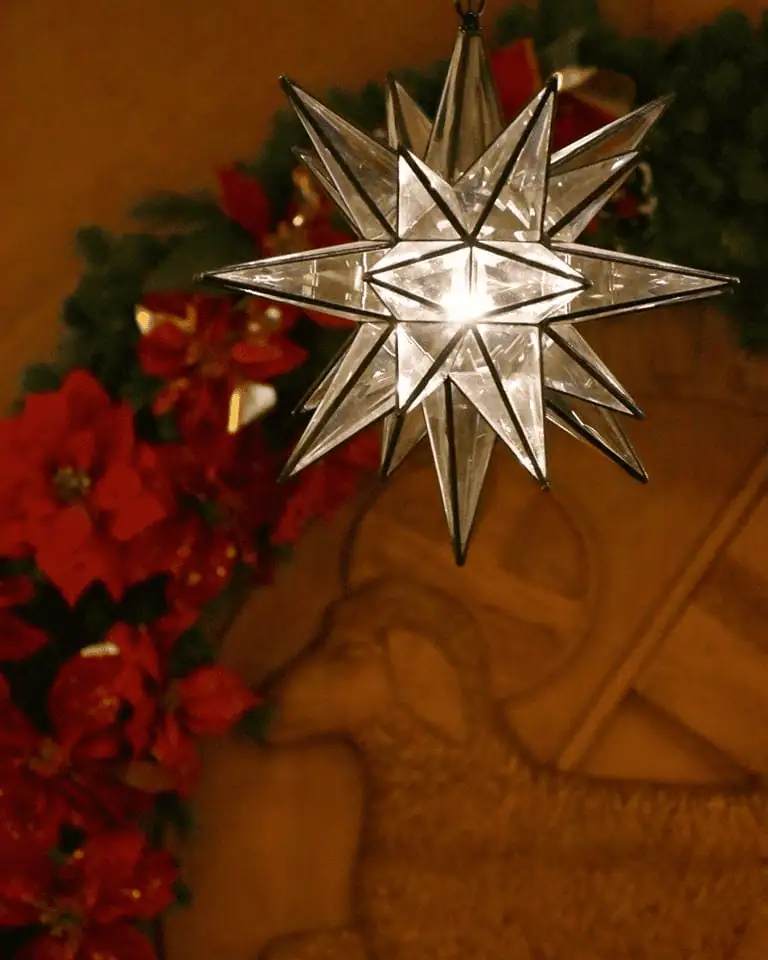

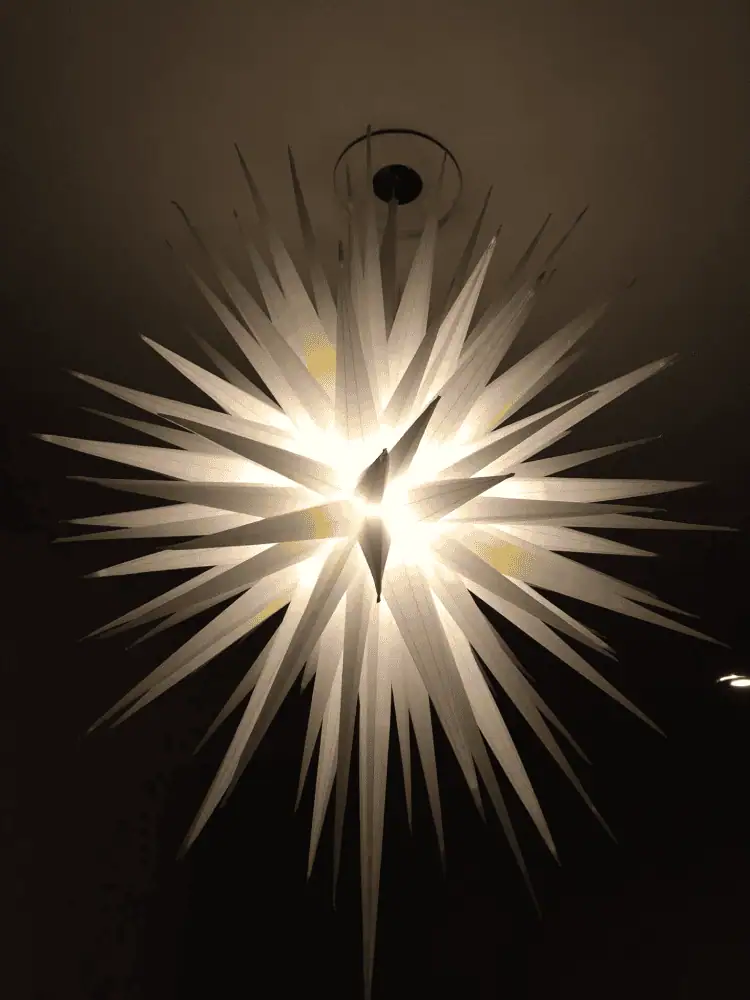
Beeswax Candles
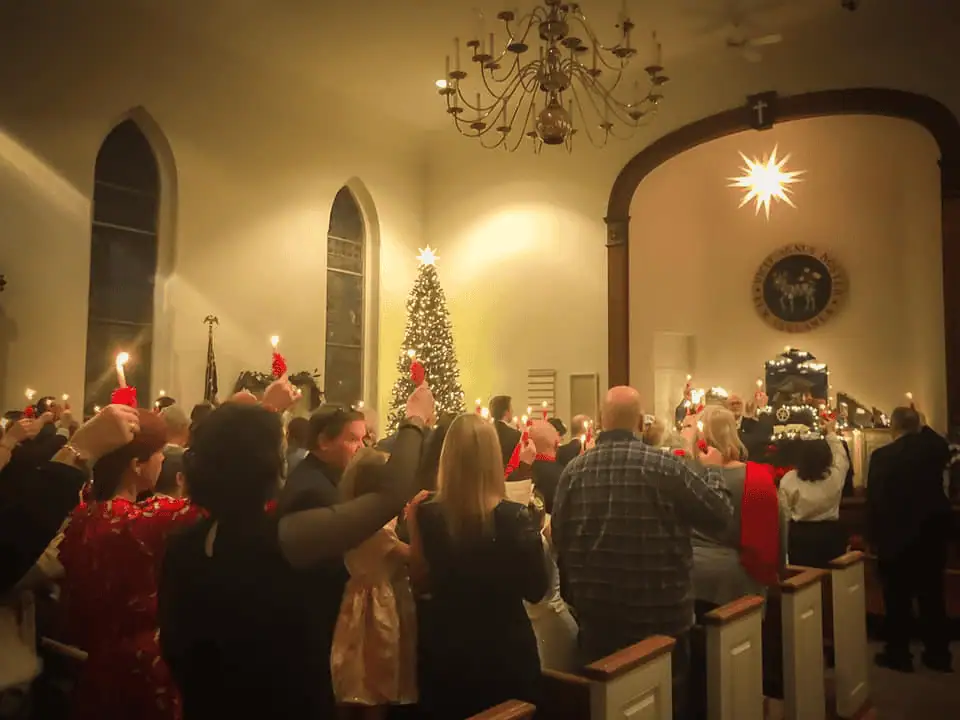
One of the most familiar and beloved Moravian traditions is the Christmas Eve Candlelight Lovefeast, during which lit candles are distributed to the congregation. The candles are handmade from beeswax and wrapped with a special red ruffle.
The service closes with the congregation lifting the lit candles high during the last verse of the final hymn, symbolizing the light Jesus brought to the world.
Beeswax, considered the purest of all animal or vegetable waxes, suggested the purity of Christ. The candle, giving its life as it burned, suggested the sacrifice of the sinless Christ for sinful humanity. Over time greater emphasis came to be placed upon the candle as representing Christ as the Light of the world.
The traditional beeswax candle continues to be a central part of Moravian Christmas celebrations. While there are local variations — the size of the candle, how its base is trimmed, how they are presented during Christmas Eve services — the light of the beeswax candle remains a powerful symbol of the light Jesus brought to the world.
History of the Christmas Candles
In 1747 the world was chaotic with political strife intertwined with religious persecution. The Brethren, who with such vigor had built the church community of Herrnhut were busily building a similar one near the castle of Marienborn in Wetteravia, Germany, as well as being engaged in mission work all around the world.
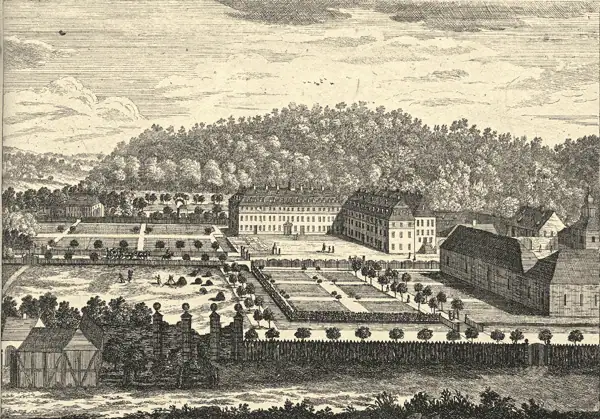
Marienborn, once a cloister, was now part of a run-down domain whose owner was happy to lease it to the Moravians who, by their industry, were sure to improve conditions. This became a headquarters of the church’s work in the mid-1740s; a school and other buildings were built and many families joined in the work of this new Moravian community.
In the castle the Zinzendorfs and other families met regularly for devotions. As Christmas neared, the children were taught much which would lead them to love their Savior, who was also once a little child.
On Christmas Eve 1747, Bishop John de Watteville conducted vigil services, using as a theme the happy anticipation of the Christ-child’s arrival. This was not a common idea then. They sang Christmas hymns, and he asked the children questions. Their answers showed their listening parents their clear understanding of the Christmas story. The children had even composed some poems which were read to the group.
Then Bishop de Watteville spoke of the happiness their knowledge of Christ would mean. To make his lesson unforgettable, each child was given a burning candle, with a bit of red ribbon wrapped around the base.
The pure beeswax, he explained, reminded them of the purity of Christ’s life. The red ribbon was to remind them of the blood of Christ shed on the Cross. And the flame, of course, reminded them that Christ is the light of the world — and that we must share the light with those around us.
This service was so moving that the following year one like it was held with the children in Herrnhut. It quickly became a memory to be cherished, an event to look forward to each Christmas; an established custom. Naturally the idea was carried to other Moravian centers.
Beeswax Candles In America
The first record in the New World of a candle service like this is in the diary of Bethlehem, PA, where it was an important event of Christmas 1756.
Life in the colonies was perilous during this time. The children from Nazareth and other schools had to be brought into the Bethlehem stockade for safety. Many of the youngsters had parents who were away on mission work. For many adults and children, it must have been hard to concentrate on thoughts of Christmas during the immediate dangers and hardships.
Just two weeks before Christmas a much-loved minister, Bishop Peter Boehler, returned to Bethlehem, having concluded some business in Europe. The devotions he conducted on Christmas Eve were long to be remembered as a bright hour amid a dark time. The town diary has a full account, summarized here:
At eight o’clock the children assembled for their Vigils service in the congregation chapel. Brother Boehler talked about the birth of the Savior and the children took part with Christmas verses, singing them with spirit and tenderness.
At last, each child was given a wax candle, lighted while hymns were being sung. More than 250 candles were lit, producing a beautiful glow, especially as they sang the concluding hymn.
Brother Boehler dismissed them with the wish that their hearts would burn as brightly toward the Child Jesus, as the candles were burning. Then they went happily home with the still-burning candles in their hands.
In 1762 lighted candles were used in Bethabara and Bethania, NC, and in their diary for 1770 it records that the children joyfully carried them home, still burning.
Until the end of the nineteenth century, only the children received candles, and this is still the case in some churches. When everyone lived within walking distance of the church, the children tried to keep the candle burning until they reached home, where it would be used to light the candles on the Christmas tree.
Giving candles to the whole congregation has become an accepted and beautiful part of the Christmas Eve vigils in many places. The grownups are permitted to share in the childlike joy of the Savior’s birth, to become children again, if only for a moment.
Candle Trimming
The charming and enduring tradition of handing out special candles during Christmas Eve worship comes with the need for advanced preparation. Candle Trimming provides a delightful opportunity for fellowship and service.
Once a year, congregations come together to decorate a hearty supply of candles with red paper ruffles, and line them up on trays, ready to be distributed on Christmas Eve.
At Schoeneck, and in most American congregations, a red ruffle is used. Other countries use green, white, or even gold ruffles.
At the beginning of November each year, the entire Schoeneck congregation is invited to share a light meal after worship before preparing the candles. Please watch the bulletins, newsletter, and social media for an announcement. You won’t want to miss out on this opportunity to participate in a beloved tradition, some tasty food, and fellowship. All ages are welcome!
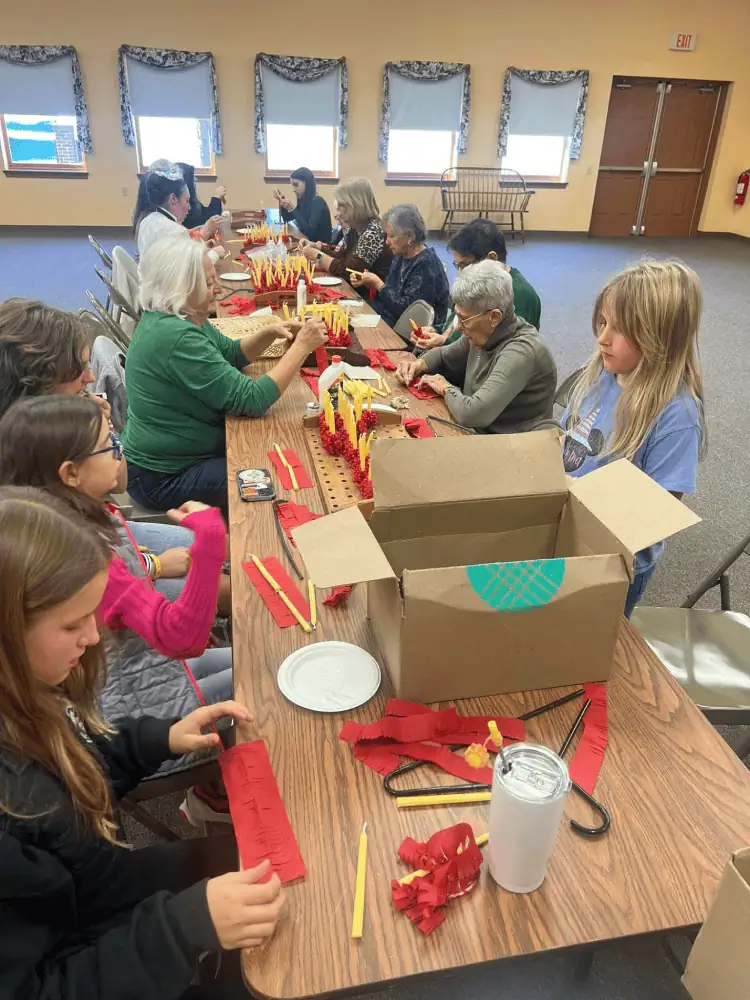
For information regarding Schoeneck’s Advent and Christmas worship services, please click here.
Some information on this page has been taken from the Moravian.org website and is used, gratefully, with permission. Copyright © 2010-2025, Interprovincial Board of Communications, Moravian Church in America. All Rights Reserved.
Some information on this page has been taken from The Beeswax Candle page of the Moravian.org website, which itself was adapted from an article by Lee Shields Butterfield which originally ran in the December 1962 issue of “The Moravian“. Copyright © 2010-2025, Interprovincial Board of Communications, Moravian Church in America. All Rights Reserved.
Photo Credit: Moravian Boarding School for Boys in Niesky © Herrnhuter Sterne GmbH. All Rights Reserved.
Photo Credit: Marienborn in the Wetterau, 1755. © Moravian Archives, Bethlehem, Pennsylvania. All Rights Reserved.
